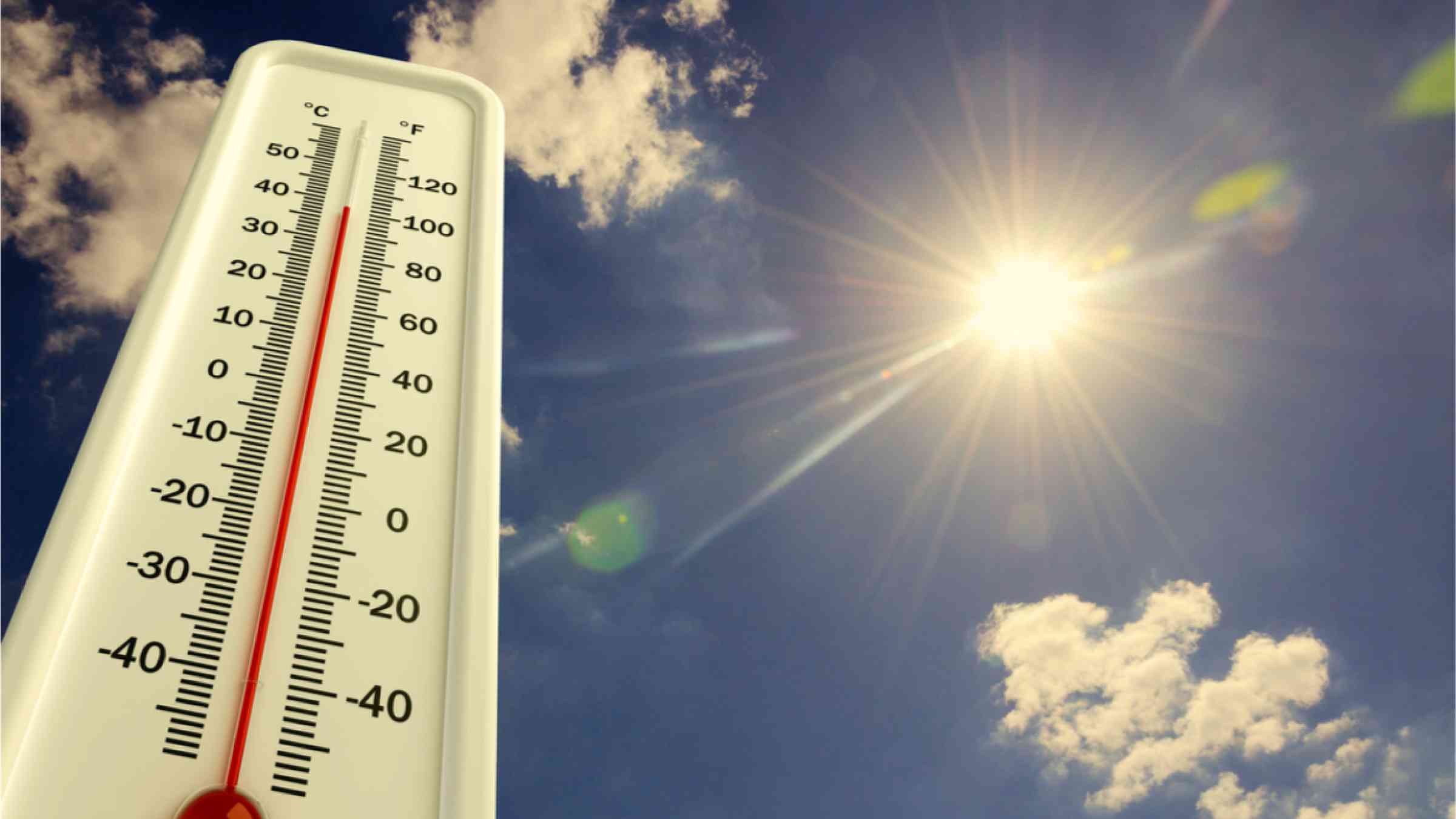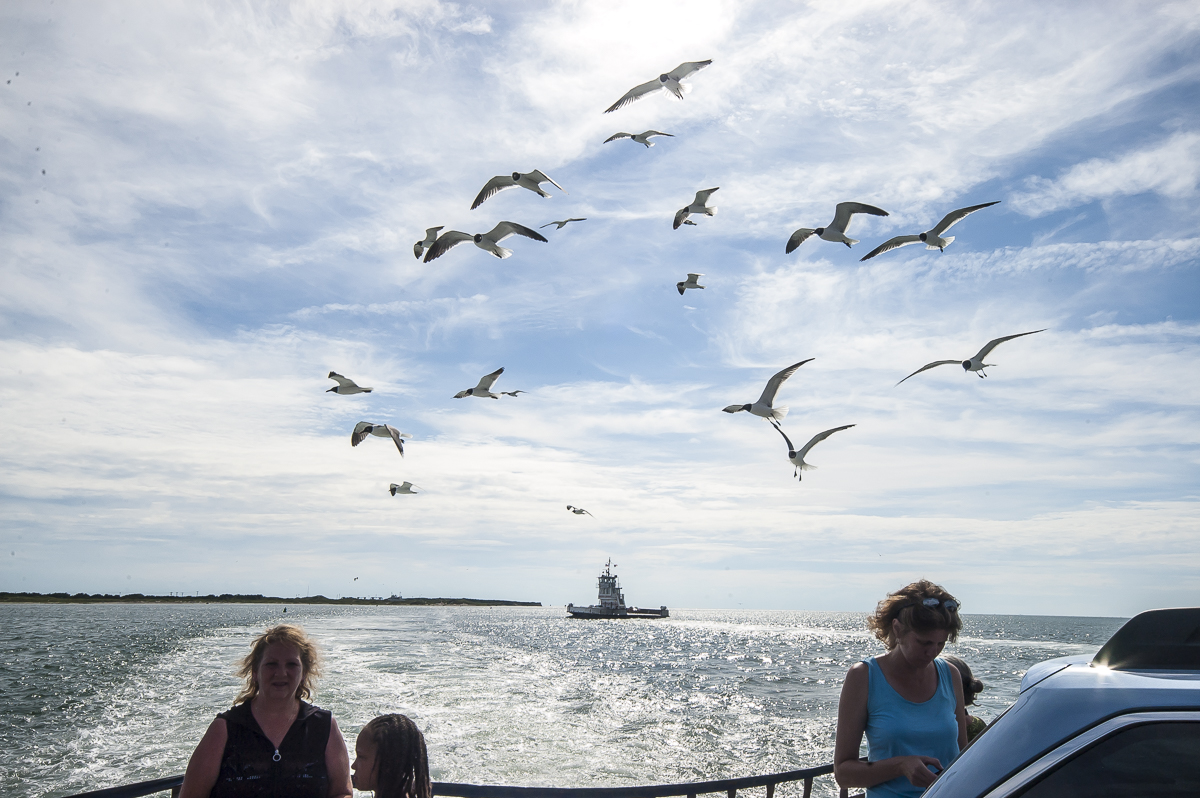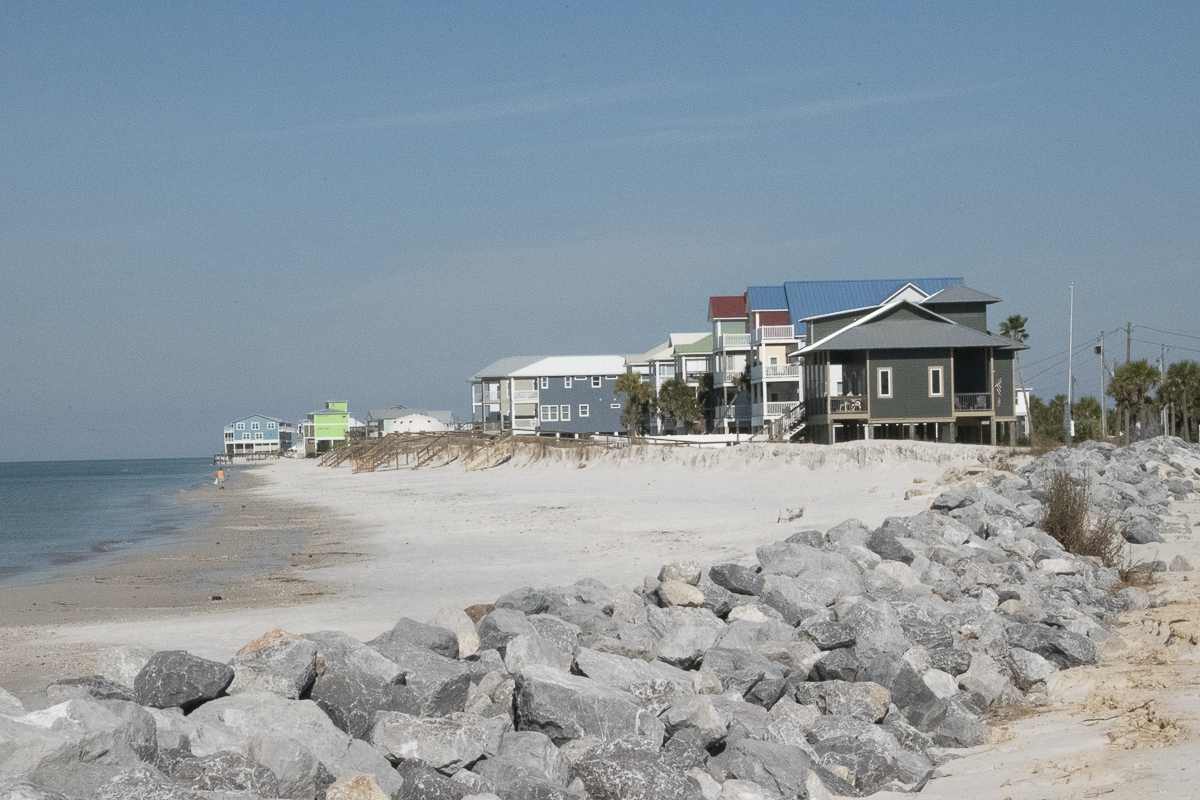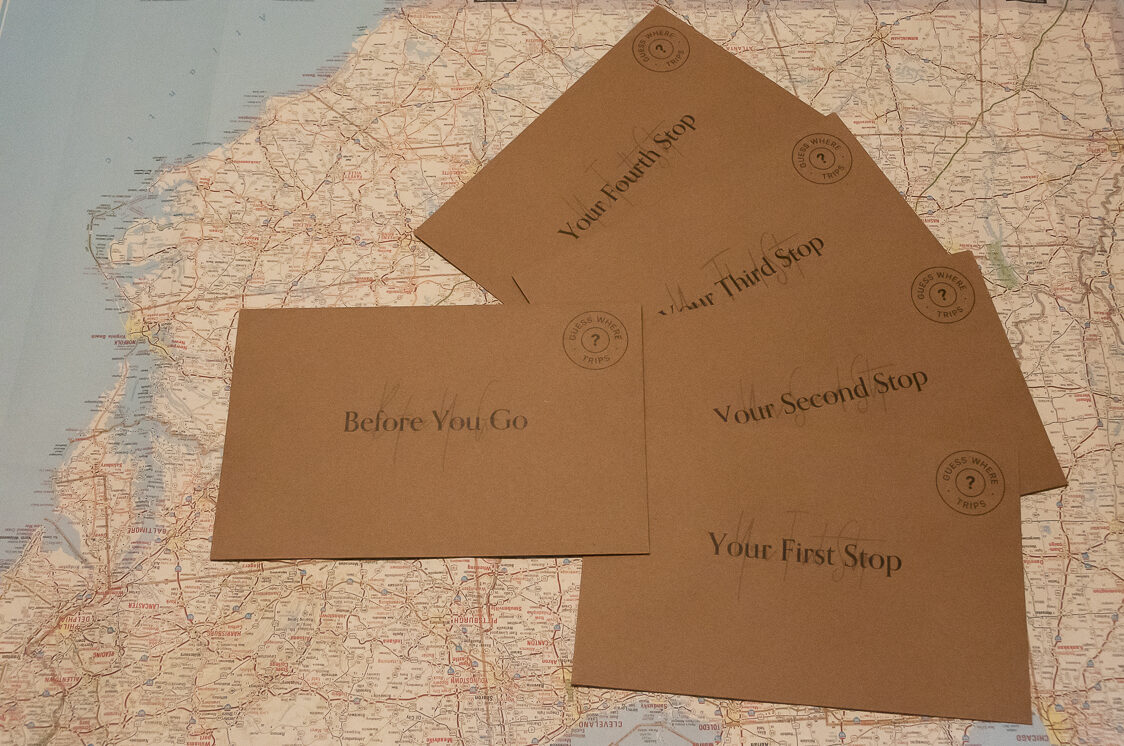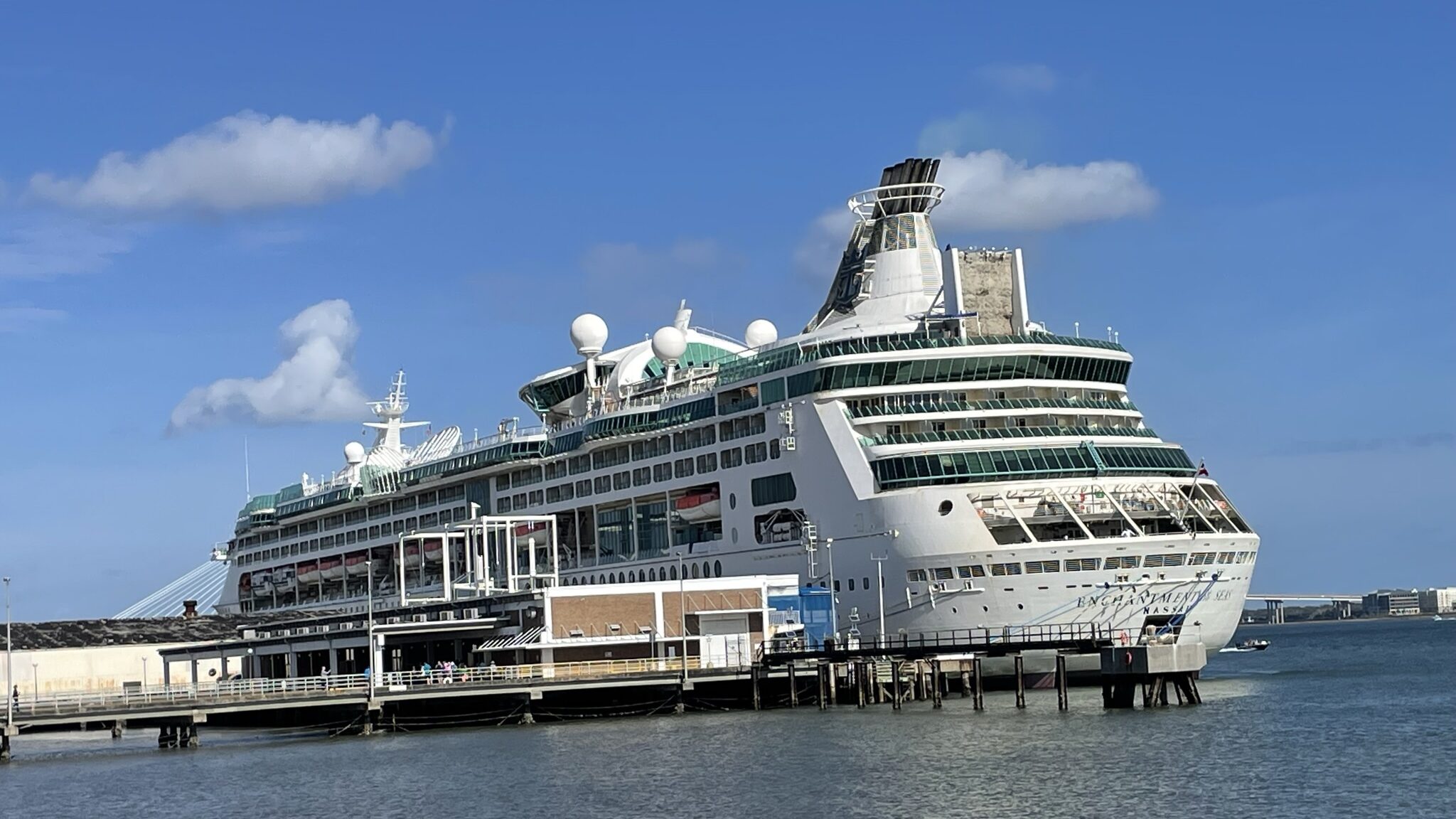Take a VA road trip and explore nature trails and beaches by day and starry skies at night
We’ve been enjoying seacoast towns of the Eastern Shore of Virginia for years and the area never ceases to disappoint. They just gets better. The area known as ESVA is a long skinny peninsula between the Chesapeake Bay and the Atlantic Ocean. The main artery is Route 13, a U.S. Highway that extends the full length of the Delmarva Peninsula and beyond. The distances between our four favorite places are short in this string of towns that stretch some 70 miles from Chincoteague near the Maryland border to Cape Charles at the Bay Tunnel Bridge. Here’s our take on how to crisscross the Eastern Shore of Virginia on a road trip and find the best nature trails and beaches by day and starry skies at night.
How to get there
If you’re coming from the north in Baltimore, Washington D.C. or Philadelphia, take Route 50 South to pick up Route 13. From the south, take the Chesapeake Bay Tunnel Bridge near Norfolk that crosses the Atlantic Ocean at the mouth of the Bay and connects to Cape Charles. We prefer to visit during the shoulder seasons in early spring and late fall when traffic on Route 13 has less tourist traffic.
The website Visit ESVA has all the information you need. Birders in particular will enjoy the advice to “Bird like a local” from Birding Eastern Shore.
Chincoteague, VA

Begin in Chincoteague, part of Assateague Island National Seashore, on the Atlantic coast. It’s a favorite family getaway for a laid-back beach retreat where you’ll find sandy beaches, nature trails for walkers, baby strollers and bike riders. See the wild ponies roaming through the marshlands as you get the lay of the land. Kids love it. The miles of protected trails make it especially popular with birders and nature lovers. Here’s our story about Chincoteague
NASA’s Wallop Island Flight Facility draws space enthusiasts to watch their rocket launches that regularly resupply the International Space Station. And the Visitor Center captures the interest of kids of all ages with exhibits and activities.
On a clear night look to the sky for a cascade of stars and planets. The causeway to the island has a walkway leading to the refuge which is a popular spot for stargazing. Visitors bring binoculars and a folding chair and sit while enjoying the live entertainment in the sky.
There are plenty of restaurants and accommodations which you’ll find online at Come Visit Chincoteague.
Onancock VA
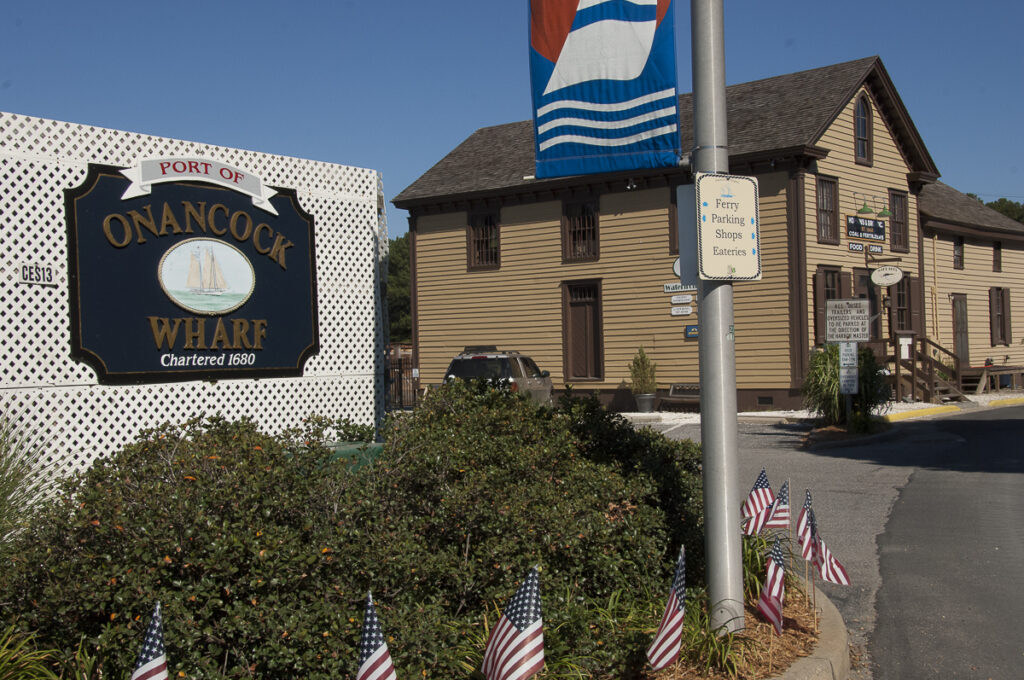
About 30 miles south of Chincoteague, Onancock is a small waterfront and walkable town on Chesapeake Bay. We first found Onancock cruising up Onancock Creek on our boat, now we return by car. The town is just off Route 13, where you turn east to Hwy 17 for 9 miles and it becomes Market Street, the main artery of town. You can stroll the tree-lined streets or sit on a bench by the water and watch the day go by. We like the Bakery where you can pick up a donut, a pie or order a wedding cake. On our last visit we saw one head out the door into the bed of a pickup truck. This is a charmer of a small town.
The North Street Market has an impressive selection of gourmet specialties near the Charlotte Hotel & Restaurant and nearby you’ll find B&Bs, art galleries and more specialty shops. We like the Onancock Wharf at the end of Market Street where you can walk along the dock or enjoy a meal at Mallard. a restaurant on the water. Nearby you can rent kayaks, paddle boards or charter a sailing adventure. For more information go to www.onancock.com
If you’re intrigued by island life on the Bay, take a boat trip from Onancock to nearby Tangiers Island.
On a clear night bring binoculars and do some stargazing. Find a comfortable chair outside your stay, sit on a bench at the harbor or take a walk in the town park. You won’t find light pollution in Onancock so anywhere you go offers a wide open night sky.
Wachapreague, VA
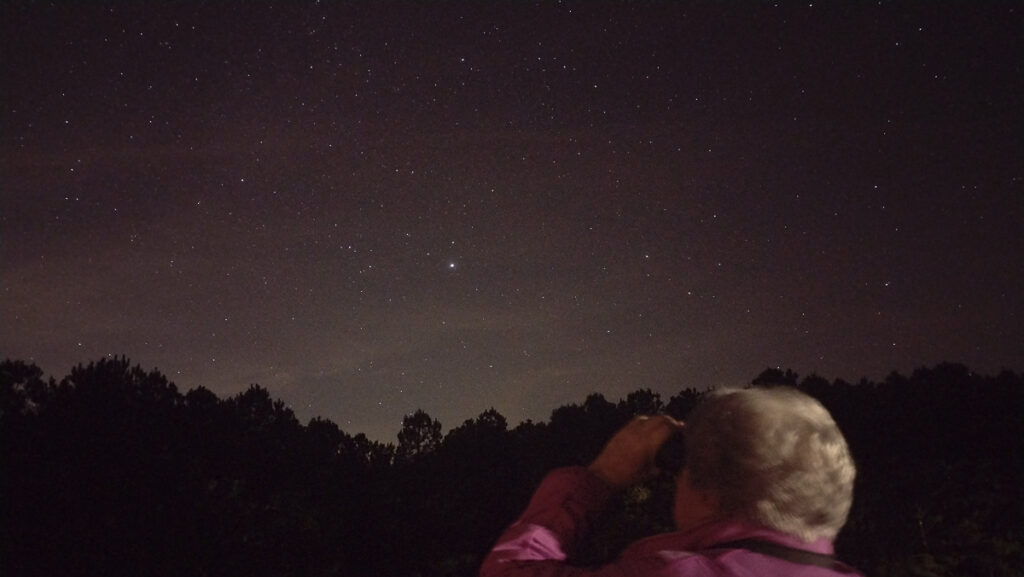
Just 12 miles south and east of Onancock on the shores of the Atlantic sits “The little city by the sea” the moniker for Wachapreague, a small fishing village, that’s long been a fishermen’s favorite destination. A turn east off Route 13 to Route 180 takes you to Main Street which intersects with Atlantic Avenue on the waterfront making it the center of town. There you’ll see the marina docks, the Wachapreague Inn and the Island House Restaurant. In earlier days the Hotel Wachapreague hosted wealthy Yankee sportsmen and fishermen who took a train to nearby Keller. The 4-story 30 room hotel drew tourists for many years until a fire destroyed it.
Today nature lovers and fishermen continue to visit enchanted by the town’s unvarnished charm and small town atmosphere. Even the widest of pickups towing boat trailers seem to manage the narrow town streets. A classic town park with a gazebo and benches looks out onto the docks. And VIMS, the Virginia Institute of Marine Science Laboratory has its eastern shore division, a site for resident research in coastal ecology and aquaculture in the town of Wachapreague.
During the day the nearby marshes are popular with canoers and kayakers. In and around town bike riding on the flat streets and roads is ideal. Bird lovers find the town perfect peeping, especially during the migration seasons of spring and fall. At night we like the town park for stargazing where you can sit on a bench and point your binocs to the sky. There’s no worry about light pollution in this small enclave that appeals to the quiet crowd. And the annual summer Wachapreague Fireman’s Carnival is a popular event for kids of all ages where you’ll find nightly bingo, carnival rides, food and entertainment on the waterfront at this old fashioned town carnival. For information about visiting go to Wachapreague.
Cape Charles, VA
Leaving Wachapreague for Cape Charles on Route 13 it’s only a 35 mile drive. Turn on Route 184 going west to find the center of town. You’ll see a water tower disguised as a lighthouse next to the Visitors Center wher you can pick up brochures and get information. Road signs direct you a short distance to Historic Cape Charles, a beach town with visitors in mind.
You can stroll down Mason, a tree-lined street with specialty consignment stores and artisan boutiques, candy confections, gourmet foods, art galleries, and a wide range of eateries. It’s one of the few places we know with back-in diagonal car parking.
We like the proximity from Mason Street to the town beach in a neighborhood with more retailers, B&Bs and private homes. The beach front showcases lovely waterfront homes and the nearby harbor entrance caters to visiting boaters on one side; on the other there’s a busy working harbor with a large concrete construction business that manufactures concrete structures.
When you stand on the beach and look across the Bay you see why in earlier days passenger steamers and freight barges connected Cape Charles with Norfolk to make the 36 mile crossing.
For visitor information go to Cape Charles VA.
Kiptopeke State Park
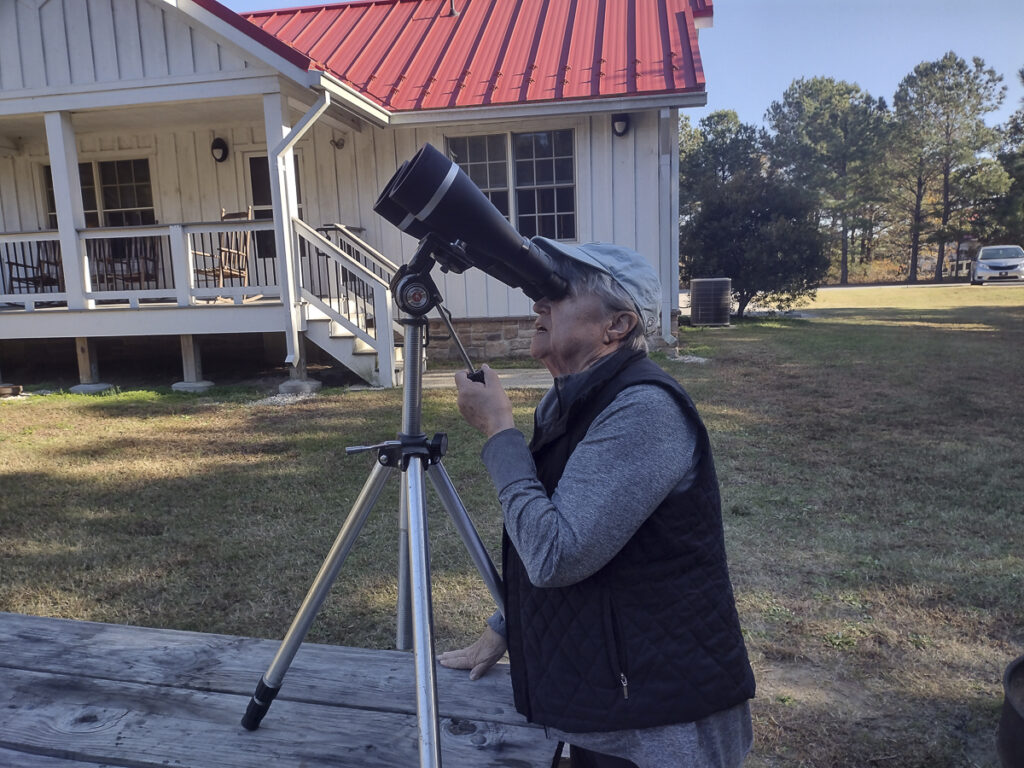
The Accawmack Indians called the area Kiptopeke because it means “Big Water” which is where the state park just south of Cape Charles got its name. The park’s location on the Bay makes it an ideal place to explore migratory birds along the Atlantic flyway and enjoy the five miles of hiking and biking trails, a playground, swimming beach and launch ramp.
Our firsthand experience using binoculars when traveling: 8×25 compact binoculars are a good choice for traveling because they’re lightweight and easy to tuck into a backpack or purse. The first number”8” is its magnification which makes an image 8 times closer than what you see with your eyes; it’s good for a wider field of view. The “25” is the size of the objective lens measured in millimeters that defines how much light the binocs can gather. A larger objective lens has more light gathering power so the image resolution will be higher and brighter.
On clear nights we went outside the cottage with astronomy binoculars on a tripod and set up in the yard to catch an almost full moon. At the harbor we used binoculars at a picnic table to peruse the night sky. We rate the very dark skies A+ for viewing.
We rented a cottage at the park and spent the days watching dog walkers at the beach and people launching fishing boats, kayaks, canoes and paddleboards at the harbor. We tramped up to the Hawkwatch platform for a look at raptors heading south.
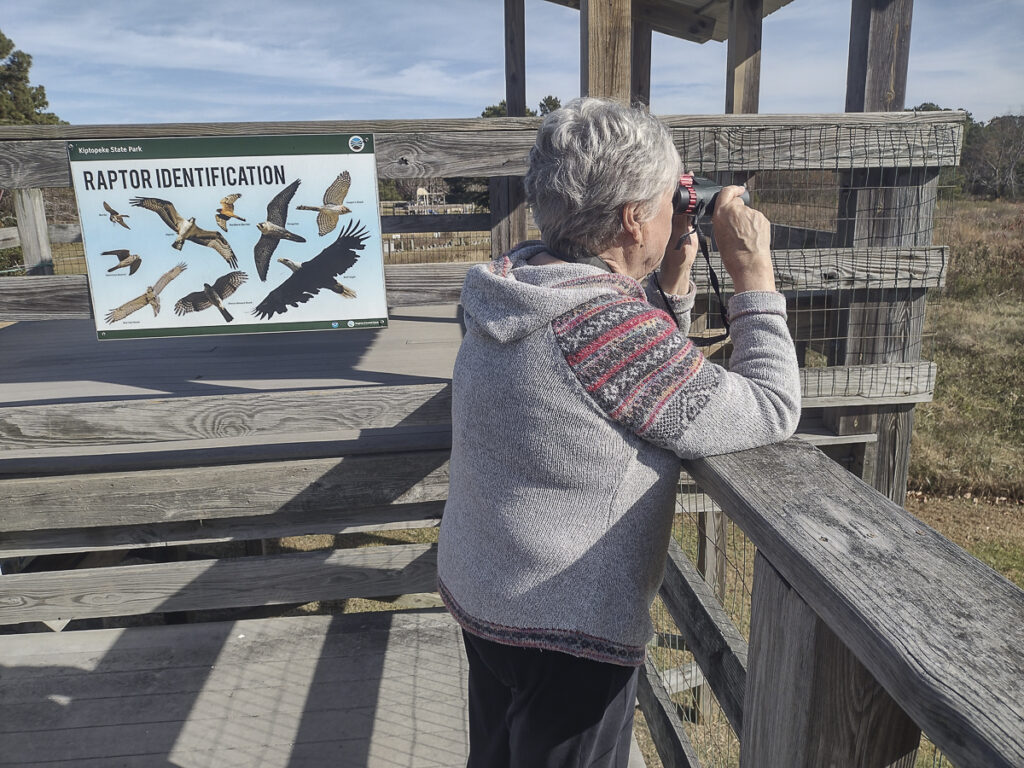
A good viewing spot overlooking the marsh
The Concrete FLeet
On clear nights we went outside the cottage with astronomy binoculars on a tripod and set up in the yard to catch an almost full moon. At the harbor we used binoculars at a picnic table to peruse the night sky. We rate the very dark skies A+ for viewing.
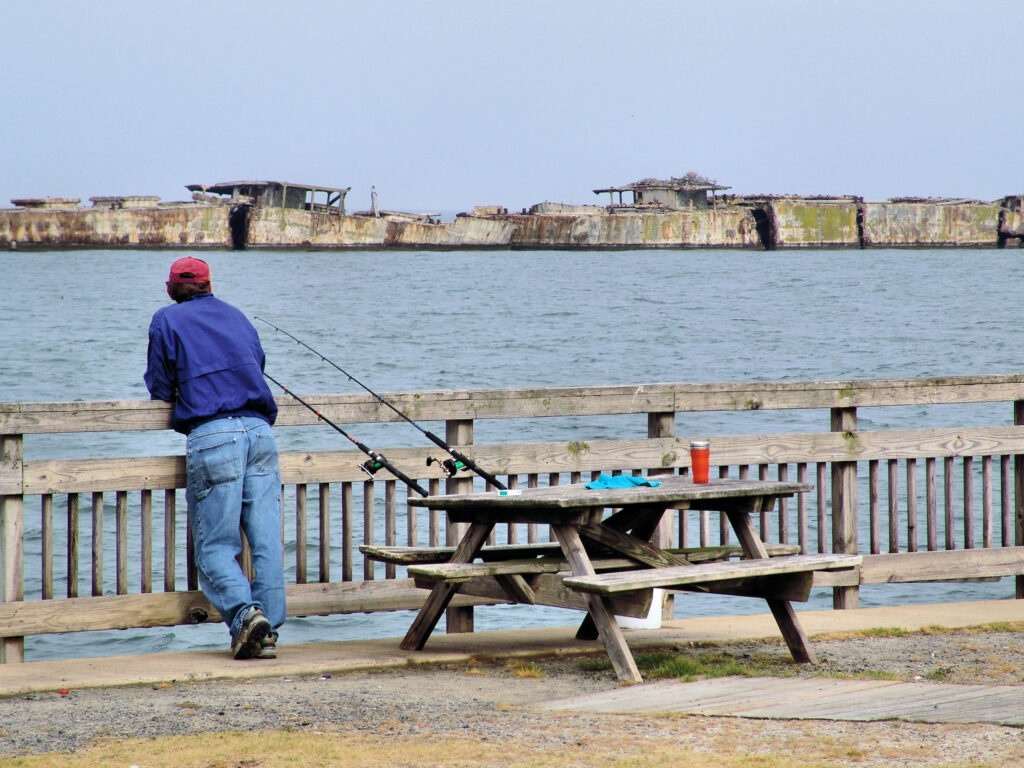
The park has a most unusual breakwater called the Concrete Fleet, protecting its harbor. The Kiptopeke Breakwater is made of several concrete ships lined end to end just west of the former Chesapeake Bay ferry terminal. The crumbling hulks consist of 9 of the 24 concrete ships used during World War II. In 1948 the ships were brought to Kiptopeke Beach to protect the terminal during severe weather. Once arranged, their bilge-cocks were opened to bring on water and they were left to settle on the bottom of the Bay. They look like string of grey ghost ships. It’s something you have to see to believe.
Kiptopeke has something for everyone who enjoys wildlife and being outdoors. Here’s a link for more information about Kiptopeke State Park.
Chesapeake Bay Tunnel Bridge
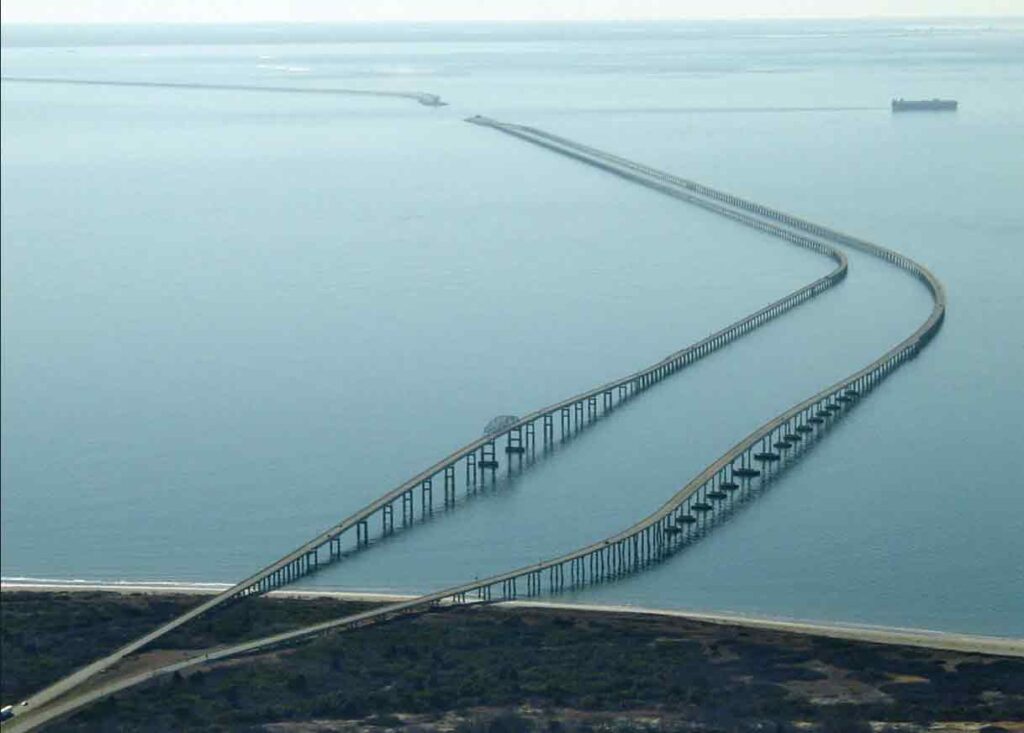
The bridge tunnel is an exciting drive going over and under the Chesapeake Bay which takes you on a 17-mile passage. The west end of the Chesapeake Bay Bridge Tunnel is at Virginia Beach near Norfolk, VA. We suggest these two nearby must-stops. At the Eastern Shore of VA Welcome Center we found the most helpful volunteers and mountains of information. Just beyond is Fisherman’s Island National Wildlife Refuge, an amazingly quiet and peaceful refuge for nature lovers interested in birding, walking trails and launching a boat or kayak to explore the waters. Fisherman’s Island National Wildlife Refuge.
Good reading: For more information about the area, pick up the book Off 13, The Eastern Shore of Virginia Guidebook by Kirk Mariner.
Another interesting read is American Fire: love, arson, and life in a vanishing land by Monica Hesse The book documents the trial of a man charged with dozens of counts of arson in a rural Virginia county.
- Road Trip to the Small Harbor Towns on Maryland’s Eastern Shore
- Explore Chincoteague VA on the Eastern Seaboard
- Road Trip to Delaware Beach Towns
Gene and Katie Hamilton travel the U.S. extensively in search of a favorite place. They are members of the Outdoor Writers Association of America.
Post Views: 891
|




